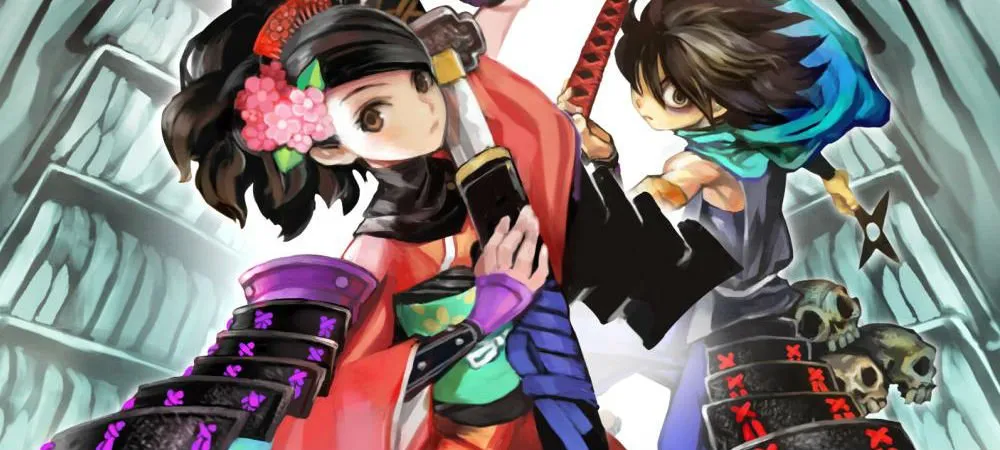A slightly sharper blade
Muramasa: The Demon Blade was probably Vanillaware’s most uneven game. Alongside of the expected spectacular visuals, a beautiful soundtrack, and surprisingly simple yet enjoyable combat system, came a fairly uninteresting story, and a lot of repetitive gameplay elements.
Although Muramasa was great on paper and on a canvas, it didn’t always follow through with its premise, which was disappointing. It looks like not a whole lot has changed in 2013, because other than adding in some gorgeous visuals, Muramasa Rebirth on the PlayStation Vita doesn’t change much.
The repetition sure is a lot more manageable on the go in shorter spurts, however.

Muramasa Rebirth (PlayStation Vita)
Developer: Vanillaware
Publisher: Aksys Games
Released: June 25, 2013
MSRP: $39.99
Muramasa actually gives you pretty much all the tools you need at the start of the game after you choose one of the two potential main characters — Kisuke or Momohime — each who have a different story (but ultimately visit the exact same areas, just in a different order). In a somewhat initially confusing fashion, each character can equip up to three swords, allowing the player to switch between them. If you use a sword too long, it breaks, forcing you to switch to another while it “heals” (they’re spirit swords) and recovers its durability.
Everything’s great from a combat perspective, as all the staples are fully intact — the downward thrust, the uppercut slash, the dashing cut, dodge rolling, blocking — it’s all right there at the start, and it allows for quite a bit of finesse and skill based play. As I said, these are pretty much all of the tools you’re going to get during the roughly two 10 hour campaigns outside of crafting, and it’s just about all you’re ever going to need.
But while the setup and foundation are solid, where the game somewhat fails is that most of the time, it doesn’t quite give you a venue to show off said finesse, as it’s consistently intent on delivering you handfuls of goons and relatively low-rent enemies who don’t do much more than fill the screen. Thankfully, the environments are classic Vanillaware — gorgeous and full of life, especially on the Vita’s OLED screen — and compliment the incredible soundtrack quite well to the point where you may not mind it as much.

Boss fights are the absolute highlight of the game, and show off how fun the combat system really can be without any elements of repetition involved. In top Vanillaware form, every boss looks incredible from a visual standpoint, and will test your skills to the max mechanically — especially on a higher difficulty setting. I’d go so far as to say that a few of them in particular are among my favorites of this generation, as they have a clear old school feel to them, and a sense of challenge. With a pared down story and a few more boss fights, any semblance of combat repetition could have been eliminated — they’re that fun.
It’s not just thug fighting that gets repetition too — actually getting around in the game’s environments, despite how stunning they are, is at points, grating. Often times playing Muramasa is like playing a sprawling Metroidvania with large heaps of barren wastelands, with massive amounts of backtracking. Some form of real fast-travel system outside of the bare-bones one included, even if it was only for areas you’ve been to before and at limited areas (save points) would have been a key addition in the Vita version, but alas, you’ll be hoofing it quite a bit — and thankfully, that’s when you can put the Vita on its idle setting and come back later.
The translation is definitely improved from the Wii version, as each character is now more defined. Kisuke is a lot more standoffish in particular here, as his newly improved dialog helps cement his cold demeanor far better than the original script. While I didn’t notice an Earth shattering difference in quality, you can easily tell that it is superior if you’ve played the original. As a side note, the voices are still in Japanese, and they’re still great.

Outside of the flaws of the original, there is one major new problem that should be addressed: the DLC elephant in the room. The powers that be have strangely decided to not include the four new characters in the retail version in favor of selling them as DLC, for an undetermined price, and at an undetermined date. When you’re charging fans for a full price portable version of something that’s barely been updated content wise, you better have a few extras ready to sway people — but in this case, it’s paid DLC not available at launch.
While the core game with all its blemishes and wonder is fully preserved, I can’t help but think how great this re-release could have been with the characters fully intact as unlockables. For those of you who are on the fence, waiting for a verdict on the DLC and picking up the Vita version at a lower price may be the best option.

But in spite of the lack of new content, Muramasa at its core stands on its own as a solid action game. Vanillaware’s visual style is absolutely timeless, and even though you may get sick of seeing the same locales over and over, the Vita’s portability and instant standby feature make it much easier to pick up and play over the course of a few days.
If you’ve already played Muramasa to death, I doubt you’ll find anything worth paying full price for in Rebirth (yet), but for those of you who haven’t experienced it and haven’t played a Vanillaware game, this is a great way to see that beautiful art everyone keeps talking about.





Published: Jun 28, 2013 02:00 pm